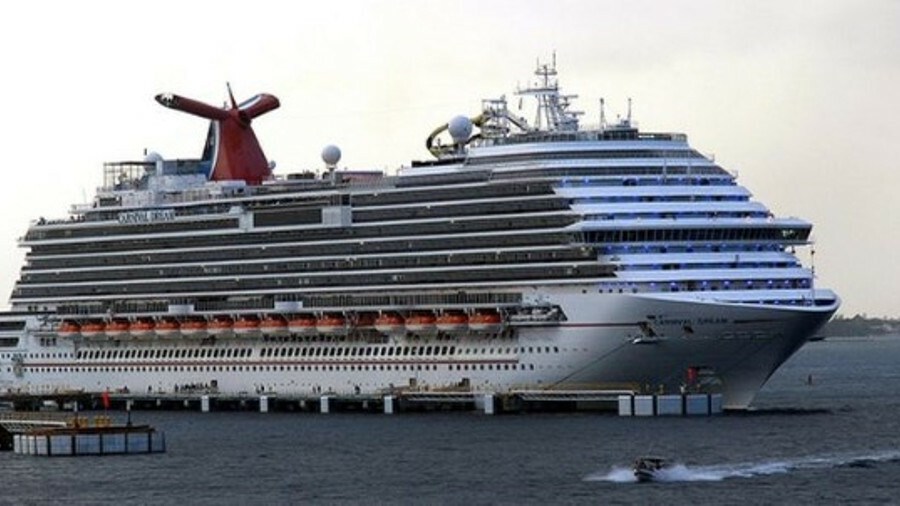Table Of Content

Lifeboats play a pivotal role in ensuring the safety of passengers and crew aboard cruise ships. These specialized vessels are designed to provide a haven in a maritime emergency, such as ship failure, fire, or even a distressing event like a ship sinking. It is essential for cruise ships to continuously improve and implement enhanced safety features and equipment. As the saying goes, "Better safe than sorry," cruise ships must prioritize the safety of their passengers and crew members.
Lifeboat tenders
Additionally, emergency preparedness measures, advanced lifeboat technologies, and regular safety inspections contribute to enhancing the overall safety of the vessel. We have also discussed case studies of different cruise ship lifeboat configurations and the challenges faced by the industry in meeting these requirements. These case studies highlight the varied approaches taken by cruise ship operators to meet lifeboat requirements while considering the size, type, and operational needs of their vessels. Cruise operators invest in technologies and designs that balance safety regulations, passenger capacity, and operational feasibility.
Safety Regulations
That’s in case the ship was to capsize, or some other incident rendered half the lifeboats unusable. In these instances, passengers who were not as mobile would be prioritized in the lifeboats on the opposite side, while physically fit and healthy passengers would join the crew in the life rafts. Fast rescue craft are found on all sorts of different ships, but the main example of carriage of fast rescue boats is on passenger ships.
Safety At Sea - Lifeboat History & Requirements

In an emergency, they need a way of escaping from the vessel just like the rest of the crew. As it is not possible to decompress quickly, they have their own lifeboats which are fully pressurised just like their living conditions. Hyperbaric lifeboats are a highly specialised type of lifeboat that is carried onboard dive support vessels for use by saturation divers. Partially-enclosed lifeboats offer the next level of protection above an open lifeboat. As safety has improved, open lifeboats have been replaced with other types of boat that have been designed to offer better protection to their occupants. Testing is carried out under the assumption that each person weighs 75kg and they are wearing a lifejacket.
Can lifeboats be lowered safely if the cruise ship is tilting or sinking?
Cruise ships have also been designed to allow lifeboats and life rafts to deploy even if the ship is listing up to 20 degrees. The maximum capacity of a cruise ship lifeboat is 150 people, according to the International Maritime Organization's International Life-Saving Appliance Code. The law contains high standards of compliance and manufacturing regarding safety aboard a cruise ship. Any deviations from these stringent regulations can be a punishable offense for any cruise line.
Importance of Lifeboat Drills and Training
When it comes to cruise line selection, finding singles can be a key factor in ensuring a successful and exciting journey. Some cruise lines are known for attracting a younger crowd or offering specific activities geared towards mingling and socializing. Moving forward, let’s now discuss the importance of emergency evacuation systems. The IMO’s commitment to maritime safety is further emphasized by their implementation of the Safety of Life at Sea (SOLAS) Convention, which we’ll explore in the subsequent section.
Liferafts
When operating in a tendering capacity, the maximum capacity will be different from the same vessel operating as a lifeboat. Lifeboats have a maximum capacity of 150 persons, but as a tender, the capacity will be nearer to 100 persons. The reason lifejackets are not required on lifeboats is that everyone is expected to board the boat already wearing their lifejacket. With a tender, passengers will not usually have life jackets on unless there is an emergency.
For many years, the maximum capacity of a cruise ship lifeboat was typically 150 people. However, many of the worlds largest cruise ships now hold lifeboats with a capacity of 370 to 440 people. We also ensure that the number of lifejackets, lifeboats, and life rafts on each Carnival ship exceeds the number required, based on the ship’s maximum capacity for passengers and crew. These measures ensure that the risk of accidents or emergencies is minimized, allowing guests to relax and enjoy their cruise with peace of mind. Now that we have a glimpse into the world of Carnival Cruise ships, let’s explore the crucial role that lifeboats play in ensuring the safety of all passengers and crew members. It is safe to assume that the lifeboats on all cruise ships will be designed to accommodate 150 persons because that is the most cost-effective configuration for the cruise lines.
Potential Emergencies and Evacuation Plans
To ensure their effectiveness, lifeboat training is essential for all crew members. They must be well-versed in operating lifeboats, deploying them safely, and navigating to a designated rescue area. Imagine yourself in a thrilling situation, where you find yourself relying on the reliability and buoyancy of inflatable lifeboats to ensure your safety and survival on the open seas.
Coast Guard, Carnival Cruise ship rescue 12 sailors after boat capsizes off Dominican Republic - Fox Weather
Coast Guard, Carnival Cruise ship rescue 12 sailors after boat capsizes off Dominican Republic.
Posted: Thu, 14 Dec 2023 08:00:00 GMT [source]
By being a member, you gain access to the latest updates on safety protocols and guidelines, as well as a platform to voice your concerns and suggestions for improvement. Additionally, industry associations often organize conferences and workshops where you can learn from experts in the field and stay updated on recent developments. It is through these collaborative efforts that the cruise industry continues to prioritize the safety of passengers and crew. Speaking of safety, let’s explore the recent advances in lifeboat technology.
There will be enough lifeboats for 75% of the mega cruise ships’ maximum capacity for crew and passengers. Cruise ships have enough lifeboat capacity for 75% of the maximum capacity of people on board, crew, and passengers. Liferafts are provided for the remaining 25%, although often not required as a cruise ship is never even near it’s maximum capacity. By prioritizing lifeboat training and drills, Carnival Cruise Line demonstrates its commitment to passenger safety and the importance of preparedness for any potential emergency situation. These measures work hand in hand with the presence and distribution of lifeboats to ensure the safety and security of all onboard.
These canopies, just like those on hard-shelled lifeboats, have clear patches or windows to allow for visibility. It’s important to note that these capacities are determined based on rigorous safety standards and regulations. It protects passengers from the elements, such as rain, wind, and sun, and also prevents water from entering the boat.
Regular equipment maintenance is crucial to identify any potential issues or malfunctions that may compromise the effectiveness of lifeboats. This includes inspecting and testing the lifeboat launching mechanisms, emergency communication systems, and other essential equipment. Packed with essential gear and provisions, lifeboats become floating havens of safety and survival during emergency situations at sea.


No comments:
Post a Comment